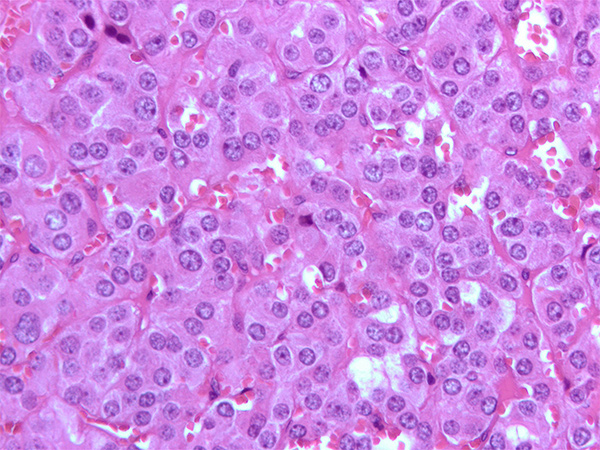Targeting Radiotherapy to Treat Rare Neuroendocrine Tumors
The FDA has approved a new targeted radiotherapeutic for treating two rare neuroendocrine tumors, pheochromocytomas and paragangliomas.

The U.S. Food and Drug Administration (FDA) recently approved a new targeted radiotherapeutic called iobenguane iodine (I) 131 (Azedra) for treating certain patients with two types of neuroendocrine tumors, pheochromocytomas and paragangliomas.
Specifically, Azedra is intended for patients age 12 and older with locally advanced or metastatic pheochromocytoma or paraganglioma whose tumors test positive for the norepinephrine transporter using iobenguane imaging.
Pheochromocytomas and paragangliomas are rare types of neuroendocrine tumors. Most patients have localized tumors that are presumed to be benign, but approximately 100-200 people a year in the United States are diagnosed with malignant forms of these tumors. In about 25 percent of cases, pheochromocytomas and paragangliomas develop in people who have an inherited cancer-associated mutation, according to the National Cancer Institute.
Pheochromocytomas and paragangliomas arise from cells in the adrenal glands, and cells along nerve pathways in the head, neck, and spine, respectively. In many cases, the cells in which these tumors originate secrete catecholamines, hormones that include epinephrine and norepinephrine. The secretion of large amounts of these hormones by the tumors can cause elevated blood pressure, palpitations, sweats, and anxiety.
Iobenguane, which is also known as metaiodobenzylguanidine (MIBG), is a molecule that is analogous to norepinephrine. It targets the norepinephrine transporter, which is present on the surface of norepinephrine-secreting pheochromocytomas and paragangliomas. Imaging using iobenguane labeled with either of the radionuclides I-123 or I-131 has been used to locate pheochromocytomas and paragangliomas in the body for cancer diagnosis and treatment monitoring since the early 1980s.
Azedra is a new version of iobenguane I-131 that delivers more radiation to tumors than the version used for imaging because of the technology used to generate it. The technology helps eliminate iobenguane that is not labeled with I-131 from being present in the final product, making Azedra a highly active targeted radiotherapeutic.
The approval of Azedra was based on results from a phase II clinical trial that showed that 25 percent of patients met the trial’s primary endpoint, which was a 50 percent or greater reduction in their use of medications to treat high blood pressure for at least six months.
One of the trial’s secondary endpoints was overall tumor response, and 22 percent of patients had either a partial or complete response.
Azedra is the second targeted radiotherapeutic approved in 2018 by the FDA for treating certain types of neuroendocrine tumors. The first, lutetium (Lu) 177 dotatate (Lutathera), was approved for treating adult patients who have gastroenteropancreatic neuroendocrine tumors with somatostatin receptor on the surface. Read how Lu-177 dotatate transformed Nicole DiCamillo’s life in the AACR Cancer Progress Report 2018 and learn more about her experience in this video.
The FDA approval was rendered on July 30, 2018.
